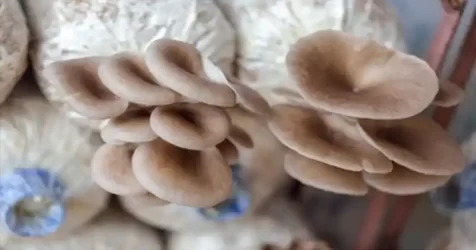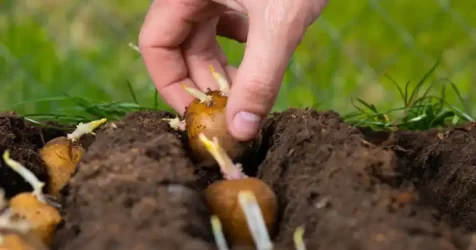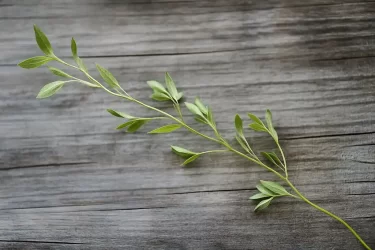Growing Herbs in Water: A Simple and Space-Saving Method for Fresh Greens
There’s something special about having fresh herbs at your fingertips, especially when space is limited or you want an easy, low-maintenance way to cultivate them indoors. Growing herbs in water is a convenient solution, requiring minimal effort while providing maximum freshness. Whether you’re short on garden space or looking to bring some greenery indoors, this method is perfect. Let’s explore some of the most popular herbs that thrive in water and learn a few tips for successful water-based herb gardening.
Why Grow Herbs in Water?
Growing herbs in water is not only space-efficient but also a mess-free method of cultivation. Unlike traditional soil gardening, water-based herb gardening eliminates the need for pots, soil, and frequent watering. The process of rooting herbs in water allows you to observe root growth and ensures that the plants receive the hydration they need consistently. It’s a fantastic option for people living in apartments, small homes, or even for those who want to add a bit of nature to their windowsills.
How to Grow Herbs in Water
Before we delve into specific herbs, here’s how to start:
- Select Fresh Herb Cuttings: Choose healthy stems from mature herb plants. Ensure that the cuttings are around 4 to 6 inches long, and remove the leaves from the bottom half of the stem.
- Place in Water: Place the cuttings in a clear glass or jar filled with fresh water. Ensure that the stems are submerged, but leaves should remain above the water line to prevent rotting.
- Change Water Regularly: To avoid bacterial growth and to keep the herbs healthy, change the water every few days.
- Positioning: Place your herb jars in a spot with indirect sunlight, such as a windowsill or kitchen counter.
- Wait for Rooting: After a week or two, you should start to see roots forming at the base of the cuttings.
Popular Herbs That Grow in Water
1. Basil
Basil is one of the easiest herbs to root in water. Its fresh, fragrant leaves are a great addition to various dishes, from pasta to salads. Simply place basil cuttings in a glass of water and ensure it gets plenty of sunlight. Change the water every few days, and within a week, you’ll notice new roots forming. Basil loves the sun, so place it near a bright window.
2. Cilantro
Cilantro, also known as coriander, is a versatile herb popular in a range of cuisines. To grow cilantro in water, take fresh cuttings and place the stems in a jar of water. Change the water every few days to maintain freshness. Cilantro may take a bit longer to root compared to basil, but patience will reward you with a continuous supply of fresh leaves.
3. Parsley
Parsley is another easy-to-grow herb in water, similar to cilantro. Place fresh stems in a glass with water, ensuring the lower half of the stem is submerged. Like other herbs, it’s essential to change the water frequently to prevent bacteria from forming. Parsley is not only a delicious garnish but also rich in vitamins, making it a healthy addition to your meals.
4. Mint
Mint is one of the most prolific herbs to grow in water. Its fresh scent and flavor make it perfect for teas, desserts, and even savory dishes. Cut a few sprigs of mint and place them in water. Mint grows rapidly in water and can easily be transferred to soil later if you wish to cultivate a larger plant. It also releases a lovely aroma, making it a refreshing addition to your kitchen or windowsill.
5. Rosemary
Rosemary, known for its aromatic, woody scent, can also be grown in water. Although rosemary takes a bit longer to root, it’s worth the wait. Snip off a few sprigs and place them in a jar with water, and you’ll eventually see roots develop. Rosemary thrives best when placed in indirect sunlight, and once it has rooted, you can keep it in water or transplant it into soil.
6. Chives
Chives are another great herb to grow in water. They are perfect for adding a mild onion flavor to dishes like salads, soups, and baked potatoes. To grow chives, place cuttings in water and watch them regrow. Chives can be harvested frequently, making them an ideal herb for regular use in the kitchen.
7. Borage
Borage, though not as commonly grown as other herbs, is a unique addition to a water-based garden. It has beautiful blue flowers and a slightly cucumber-like taste. Borage cuttings can easily root in water, making it an interesting herb to experiment with in your indoor garden.
Tips for Growing Herbs in Water
Growing herbs in water is simple, but there are a few best practices to ensure success:
- Change the Water Regularly: Water should be changed every 3-5 days to prevent bacterial growth and keep the water oxygenated for the roots.
- Provide Sufficient Light: Herbs need light to grow, so place them in a spot with indirect sunlight. If you don’t have a sunny window, consider using a grow light to ensure the herbs get the light they need to thrive.
- Use Clear Glass Containers: Clear containers allow you to monitor root growth and detect any issues, such as cloudy water or mold. Plus, they let sunlight reach the roots, aiding in growth.
- Fertilization: Once your herbs have developed strong roots, you can add a small amount of diluted liquid fertilizer to the water to provide additional nutrients. However, don’t overdo it, as herbs typically don’t need much fertilization in water.
- Harvesting: Be mindful when harvesting your herbs. Trim only what you need to ensure the plant continues to grow and thrive.



















